There can be your advertisement
300x150
The Fallen Skyscraper: The Story of One of Moscow's Most Unusual Buildings
An amazing building that impresses with its length
In Moscow's architectural landscape, there are many remarkable structures, but one stands out not for its height, but for its extraordinary length. This is the so-called "fallen skyscraper" — a building of the former Scientific Research Center for Electronic Computing Equipment (NITSÉVT) on Varsavskoye Shosse, which stretches an impressive 735 meters.
The Soviet Giant on Varsavskoye Shosse
The building now known as the "fallen skyscraper" was constructed between 1969 and 1975 according to a design by architects Leonid Pavlov and Leonid Gorchakov in the style of Soviet modernism. The main designer of the project was engineer Vladimir Kutyrev. Originally, the complex was intended for housing NITSÉVT — an organization engaged in the development of computer hardware and software.
Construction was carried out in stages, and the building was officially put into operation in 1976. During the peak of the Soviet electronic industry, this center was one of the key scientific research institutions in the country, where crucial systems for military and civilian purposes were developed.
The exact address of the building is Varsavskoye Shosse, 125. Originally, the complex was divided into several buildings labeled with letters (A, B, C, etc.), all connected into a single structure.
 Photo: pervoe.online
Photo: pervoe.onlineThe Record Holder by Length
The length of the building is approximately 735 meters, making it one of the longest administrative buildings not only in Moscow but also in Russia. The scale of construction is so impressive that three public transport stops were installed along it to make it easier for employees to reach different parts of the building.
The total area of the building exceeds 216,000 square meters. Its height is relatively modest — mostly 4–5 floors, with some towers reaching up to 7 floors.
The length of the structure also gave rise to other informal names. In popular usage, it was sometimes called the "arc of Voskresenskoye" (after the surname of one of NITSÉVT's leaders) or even the "kilometer of idlers" — a humorous reference to the vast number of employees who worked in the building.
 Photo: pervoe.online
Photo: pervoe.onlineLife After NITSÉVT
With the dissolution of the Soviet Union and the subsequent crisis in the electronics industry, NITSÉVT, like many other scientific research institutes, went through hard times. Gradually, the enormous building began to be rented out to various companies and organizations.
In 1996, the building was privatized and came under the management of the company "Informtekhnika." In the 2000s, the complex was given the status of the business center "Vashavka SKY." In 2012, a large-scale reconstruction of part of the building was carried out, updating the facades and internal spaces.
Today, the former "fallen skyscraper" houses offices, shops, warehouses, and various service enterprises. The building, once a center of Soviet scientific thought, has become a kind of business center that brings together many diverse companies under one roof.
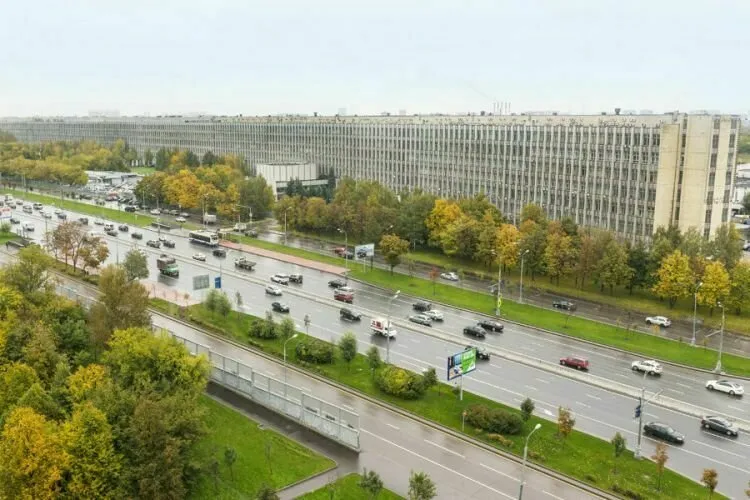 Photo: pervoe.online
Photo: pervoe.onlineAn Architectural Feature of the Capital
Despite changes in its functional purpose, the "fallen skyscraper" remains a notable architectural landmark in Moscow. Its unusual shape and impressive dimensions attract attention not only from specialists but also from ordinary residents and tourists.
Architect Leonid Pavlov, who designed the building's project, was known for his innovative approach to designing scientific and industrial complexes. His portfolio included other iconic buildings such as the pavilion "Computing Technology" at VDNKh and the building of the Central Economic-Mathematical Institute.
In modern Moscow, where vertical construction is becoming increasingly popular, this horizontal giant serves as a reminder of another era — a time when space was explored differently and architectural solutions reflected different societal priorities and needs.
 Photo: pervoe.online
Photo: pervoe.onlineThe Longest Buildings in the World
On a global scale, Moscow's "fallen skyscraper" also holds a respectable place among the longest buildings, although it is not the absolute record holder.
The Pentagon (USA) — the true champion in perimeter length among administrative buildings. The headquarters of the U.S. Department of Defense has a perimeter of about 1.5 km, and the total length of corridors inside the building is nearly 28 km. Built in 1943, the Pentagon remains one of the largest office buildings in the world.
Great Wall Apartment (China) — a residential complex in Beijing stretching more than 1 km. Built in the shape of a winding line resembling the Great Wall of China, this complex contains thousands of apartments.
Edificio Copan (Brazil) — a 38-story residential building in São Paulo designed by the famous architect Oscar Niemeyer. Its S-shaped form stretches 140 meters in length, and more than 5,000 people live in the building.
Palazzo di Caserta (Italy) — an 18th-century royal palace in Caserta, with a rectangular shape and a perimeter of over 800 meters. The palace has 1,200 rooms.
The Merchandise Mart (USA) — a commercial building in Chicago that occupies an entire city block. When it opened in 1930, it was the largest building in the world by area (372,000 sq. m).
Prora Resort (Germany) — a giant resort complex built in Nazi Germany on the island of Rügen. Its total length is about 4.5 km, although technically it consists of several separate buildings arranged in a line.
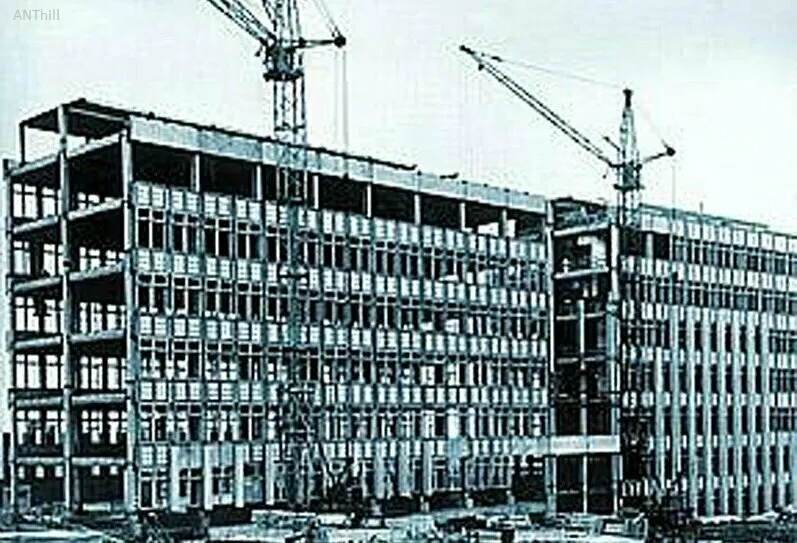 Photo: pervoe.online
Photo: pervoe.onlineInteresting Facts
If the "fallen skyscraper" were standing upright, it would be about twice as tall as the Ostankino Tower.
To walk from one end of the building to the other requires about 10 minutes at a fast pace.
During the Soviet era, more than 10,000 people worked in the building.
According to archival data, the construction of the complex cost approximately 35 million Soviet rubles.
The complex was designed with its own built-in air conditioning and ventilation system, which was rare for Soviet-era buildings.
The complex was designed to accommodate computing equipment: special halls were provided for large computers with reinforced floor slabs.
Despite the changes in the political and economic climate, some historical interiors have been preserved to this day, including original staircases and decorative elements.
This Moscow architectural phenomenon shows that impressive buildings don't have to reach upwards — sometimes, horizontal scale can leave as deep an impression as vertical ascent.
Cover: pervoe.online
More articles:
 5 Design Solutions Found in a Transformed 75 m² Trash
5 Design Solutions Found in a Transformed 75 m² Trash Light Trash 65 m² Designer with Modern and Unusual Solutions
Light Trash 65 m² Designer with Modern and Unusual Solutions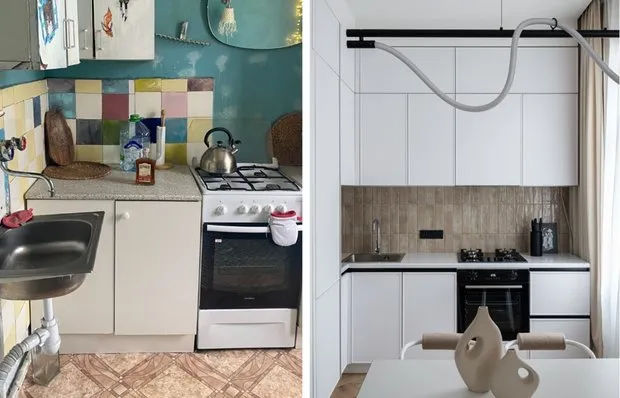 Before and After: How We Transformed the Kitchen in a Tiny Stalin-era Apartment
Before and After: How We Transformed the Kitchen in a Tiny Stalin-era Apartment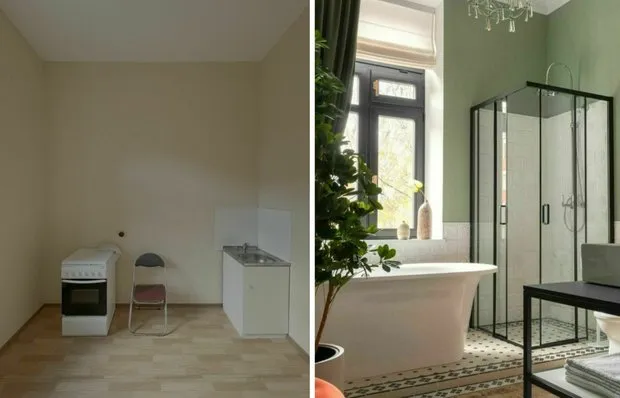 Idea for a 2-room apartment: moved the bathroom to the kitchen and it turned out great
Idea for a 2-room apartment: moved the bathroom to the kitchen and it turned out great 5 super simple storage ideas for small apartments you knew but forgot
5 super simple storage ideas for small apartments you knew but forgot How to Get Rid of Winter Depression: 7 Interior Changes That Will Lift Your Mood
How to Get Rid of Winter Depression: 7 Interior Changes That Will Lift Your Mood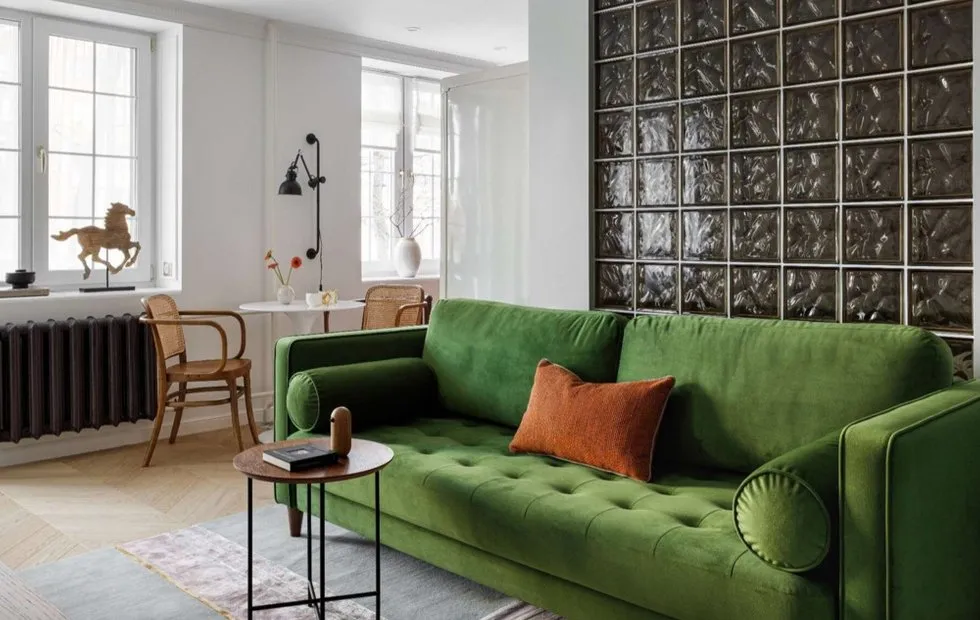 Designer in Shock: How to Renovate a Khrushchyovka and Save a Million
Designer in Shock: How to Renovate a Khrushchyovka and Save a Million 7 Critical Mistakes in Bathroom Renovation (That Will Cost You a Lot)
7 Critical Mistakes in Bathroom Renovation (That Will Cost You a Lot)